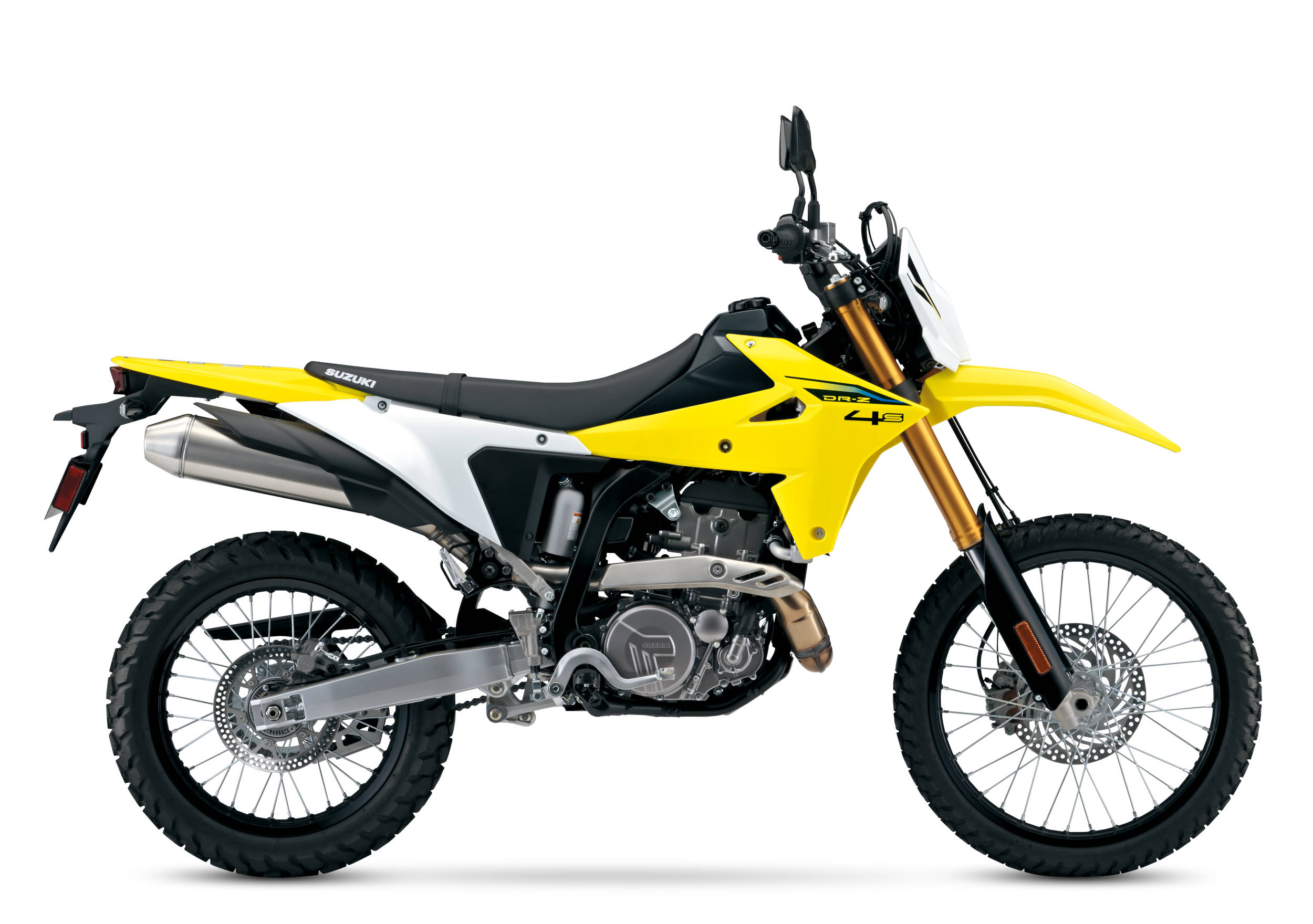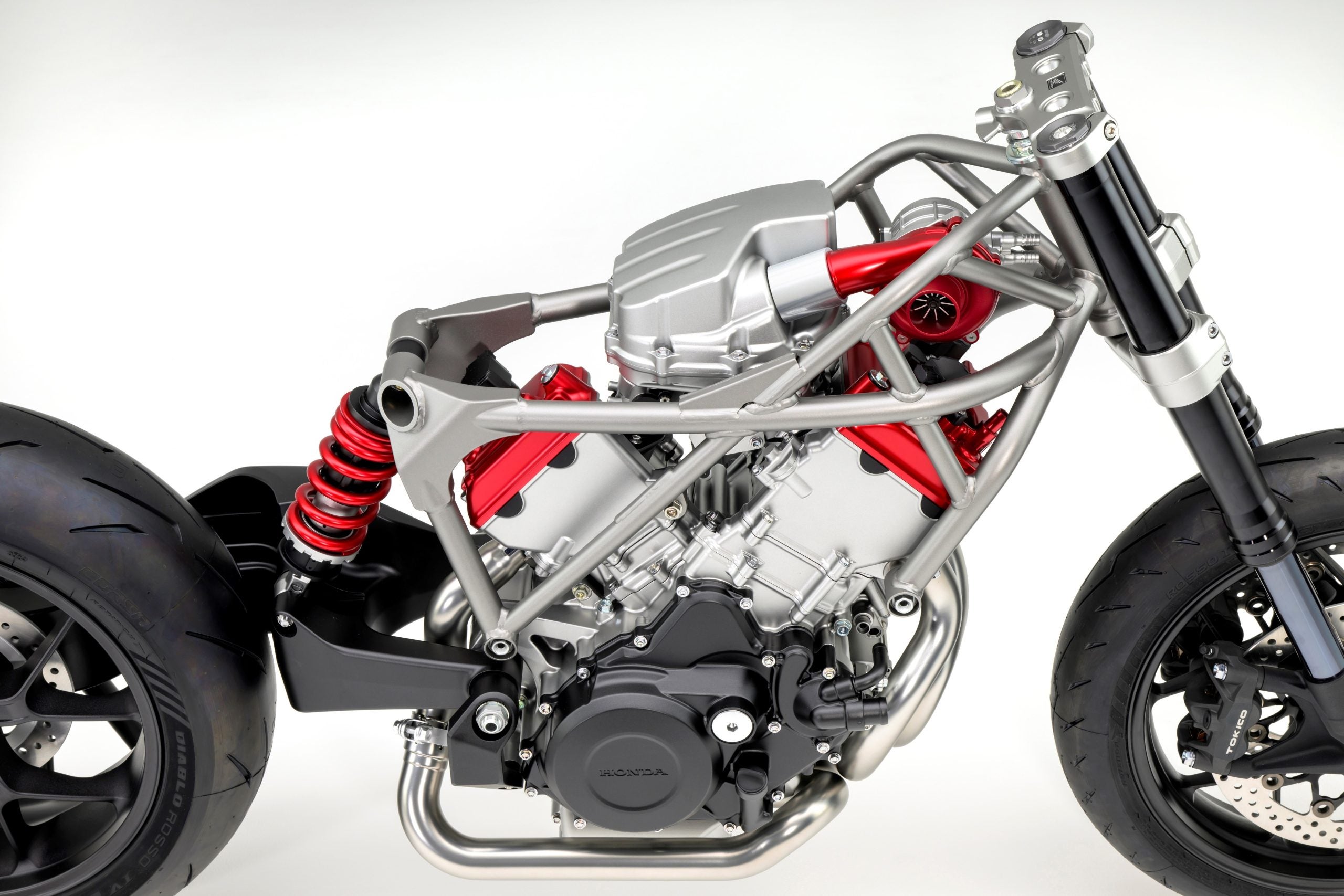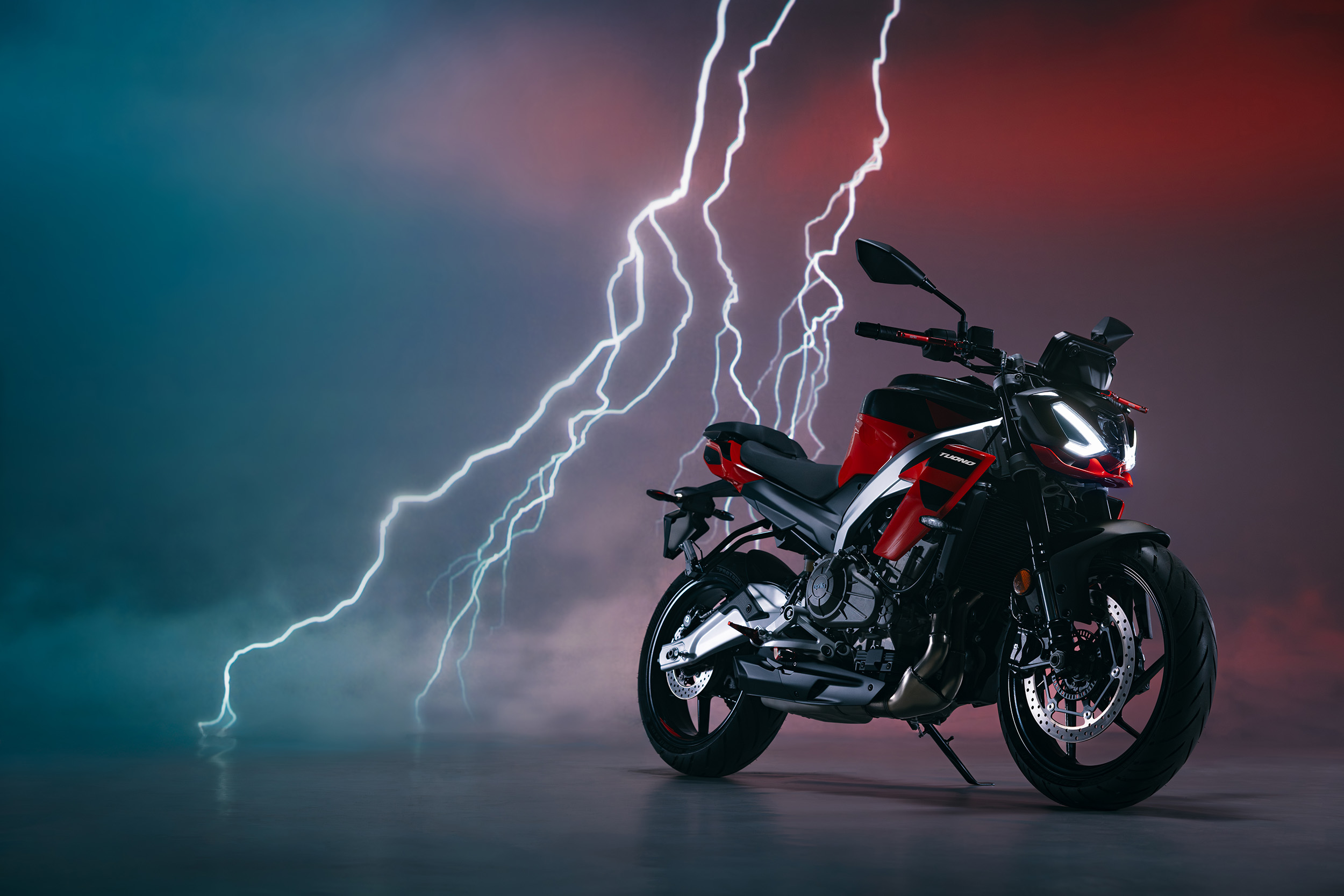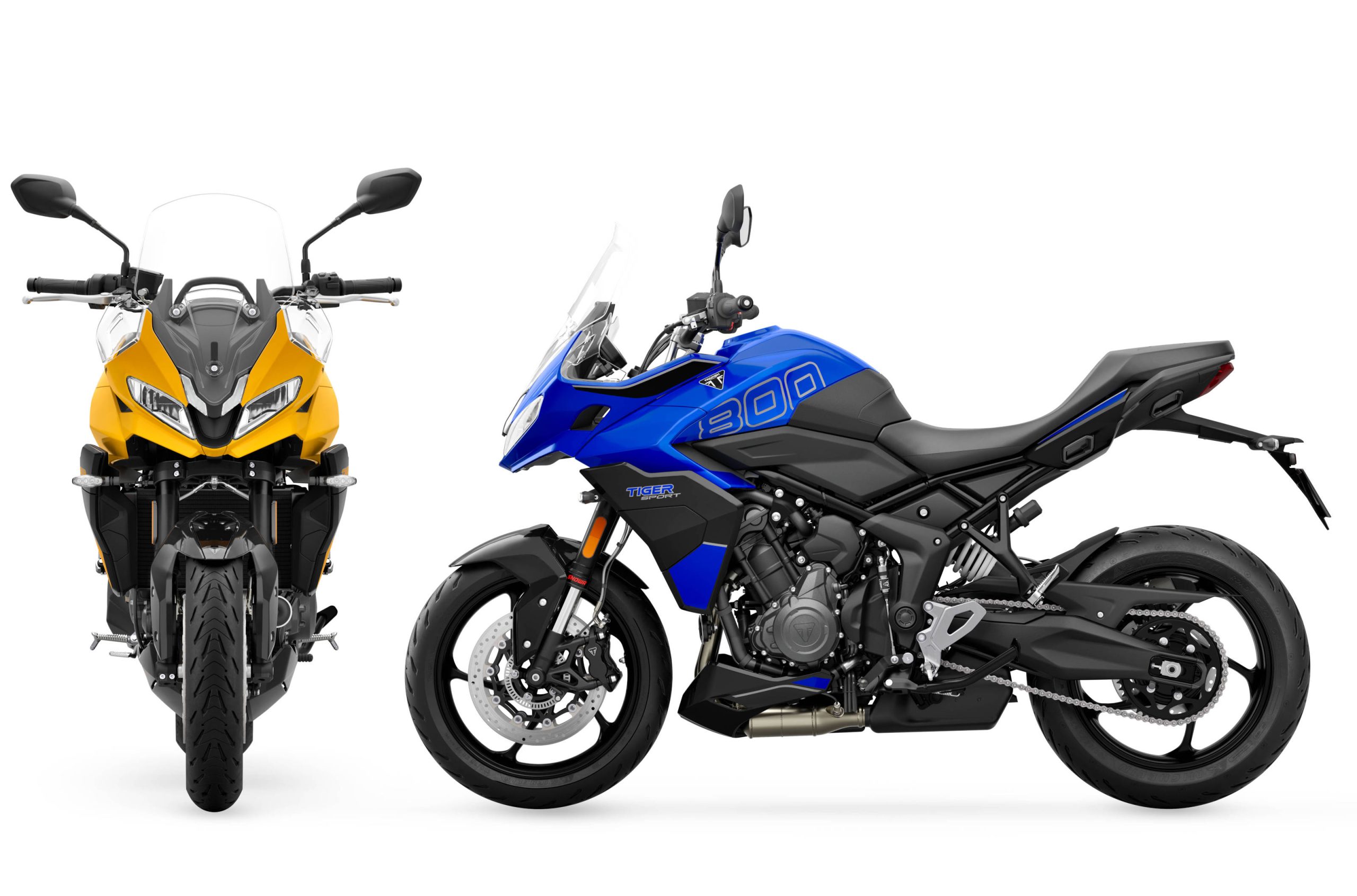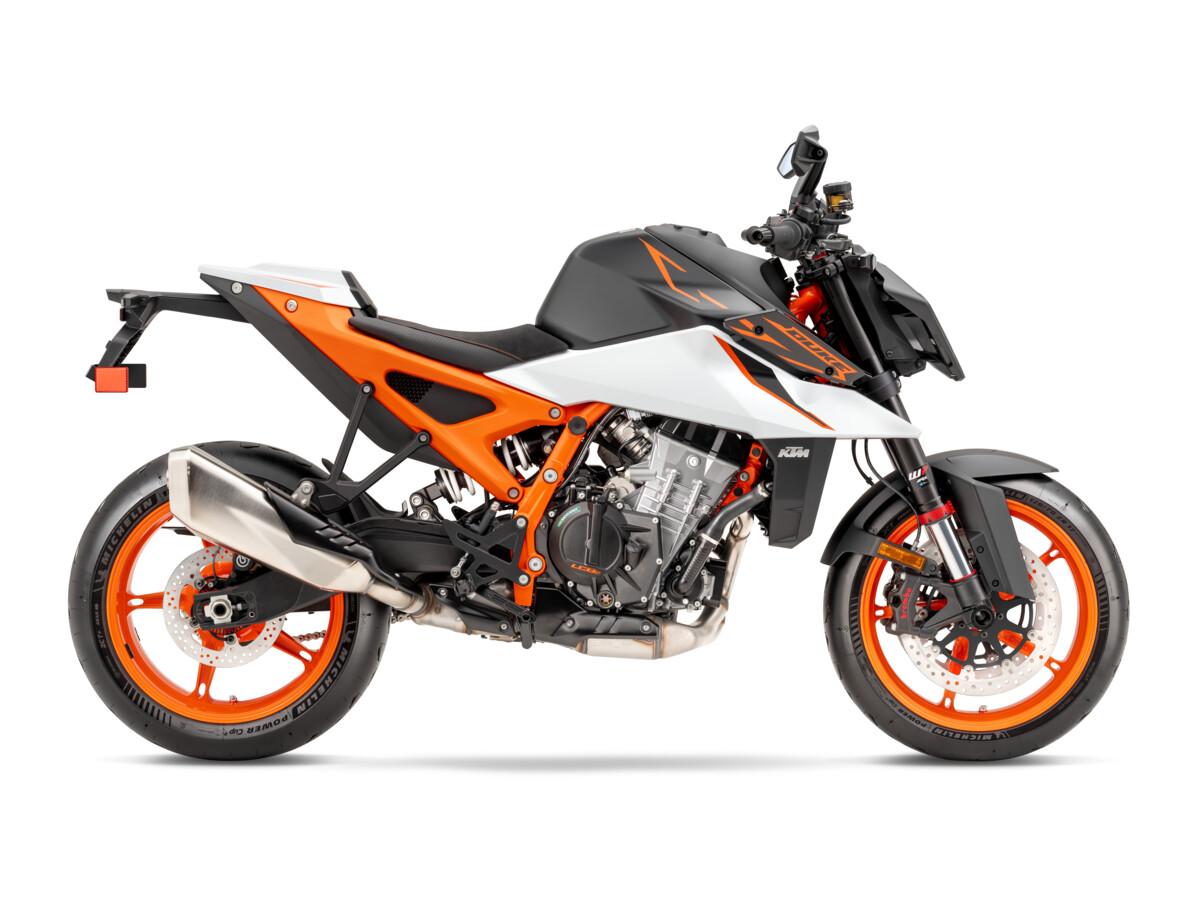
All this fun that horsepower provides us with, going fast, or at least just going, has to come to an eventual end, or stop – temporarily at least. Used to be that brakes barely got a mention in a test beyond noting they were present on the bike, and worked well enough to stop it. Within the last few years, most notably 1998, when the R1 was introduced, brakes seemed suddenly worthy of actual in depth comment – power, initial bite, fade resistance, feel, etc. Ever since the R1’s brakes came on the scene, manufacturers have made more effort to improve their bikes’ stoppers and given them the attention needed to effectively and safely stop the bike (with proper rider control input, of course) from the ever-increasing speeds being attained both on the street and the track.
The quest for lightness has caused brake rotors get increasingly thinner, and despite the extra material present for the larger diameters, there doesn’t seem to be enough metal there to handle sudden, intense and/or prolonged exposure to friction and the resulting heat. Compounding the problem, are the “floating” rotors that are actually riveted fairly tight to their aluminum carriers. The sudden or high heat introduced into the metal causes rapid expansion, and with such tight tolerances between the rotor and carrier, there effectively is not enough room for the rotor to expand, causing it to warp. This is something I had been experiencing regularly on both the 2000/2001 model CBR929RRs I owned/currently own. High mileage and sport riding had brought several sets of rotors to their knees, along with, perhaps, my braking style – late and hard. As great as Honda’s warranty is – and believe me I tested it – I had grown as weary of making the trip to the shop for new rotors as they had of installing them on the bike. I made up my mind to venture out on my own to find brakes able to withstand my use (abuse?).
Selecting a brake setup is not so easy anymore. Riders are now keenly aware of the potential of a good braking setup, and that a mismatch of components can not only be inferior in performance to what you had, but hideously expensive to boot. Just changing lines, or pads can see a small benefit, but to get all the potential from one component, others should be changed to work with it, just like when you add an exhaust system, you adjust the air/fuel mixture to match the increased flow the new pipe provides. Not doing so gives you a bike that sounds better, but in fact does not perform to its potential.
Enter the folks at Spectrum Honda. The parts guy, Rob, knew all too well of my dilemma, and suggested going with Braking’s wave rotors. I had done some research on different brake manufacturers, but could not arrive at a definite answer on which to go with. A couple things pointed me towards Braking. I had just put one of their rotors on my 125GP bike, along with a set of CM66 race compound brake pads after seeing my competitors in the class going to them, and after a little adaptation, liked the rotor/pad combo better than the iron Brembo it replaced. Fade was a problem but no more. The other thing that got me to try them is that fact that you see them at the club level here in the states and the riders like them, at the AMA level and they’re also at World Supersport level, on championship winning teams like Suzuki, with rider Stephen Chambon (2000 WSS Champion) and most recently, the current WSS leader, Fabian Foret on the Ten Kate Hondas.
I decide to go with Braking, and then Rob makes a call and a set of Wave rotors, Galfer brake lines, and a set of Galfer’s sintered 1375HH (front) compound and SM15 (rear) pads arrive a few days later at Spectrum Honda.

Braking’s Wave rotors are certainly unique in appearance. Both the inner and outer diameters of the rotor have a “scalloped”, or wave shape to them. The shape, Braking says, allows heat expansion without warpage. The shape of the rotor also allows the brake pad to “float” on the disk, which helps with even wear and heat dissipation. Rotor material is a proprietary recipe, featuring high carbon content stainless steel, referred to by them as “carbonite stainless steel” and is heat-treated. Rotors are cut by laser, not stamped by a die, and milled on both sides of the rotor to ensure that the disk is not only perfectly flat, but also that each side of the disk is parallel to the other, and not just parallel to the milling surface. The rotors are then mounted, in full floating fashion, to an aluminum carrier.
The rotor material is noticeably thicker (nearly a full millimeter) than the OE units they replaced on my 929. In my mind, more material means more heat handling capacity. This also caused skepticism on my part about the claim of lighter weight. They are lighter, but only by a couple of ounces. Weight was saved in the carrier portion of the assembly. Appearance of the rotor is very high quality, and as long as you like the bluish tint of the aluminum carrier (because that is the only color it comes in), all is good in the cosmetics department.
One of the most common modifications an owner makes to their brakes is to install steel braided brake lines. Part of this is to improve lever feel, as the rubber hose lines that come on the bikes contribute to a mushy feel at the lever, and expand under heavy use, robbing the rider of added stopping power. Part of the reason is also down to cosmetics. Sizes of the lines are either -3 (3mm I.D.) or -2 (2mm I.D.) lines. -3 lines are the most commonly sold size. They provide a marked improvement in power and feel, and get rid of the mushiness at the lever. -2 lines are more commonly seen on race bikes, where the improved power is welcome in a controlled, and more predictable environment. They are also much more expensive.
Galfer knew of the advantages of -2 lines – more power, and the disadvantage, that the power is spread over a short range of motion, making modulation difficult for an unpracticed hand, or a surprised mind – e.g. an unexpected traffic or road condition that causes a reflex action, like grabbing a handful of front brake. Another disadvantage, according to Galfer, is the reduced fluid capacity of the -2 lines. Heat transfer to the fluid occurs when the brakes are used, and when there is less fluid in a brake line, heat transfer can be compromised. -3 lines offered less overall power, but better feel and spread the power over a greater range of motion, and have greater fluid capacity. Galfer wanted to combine advantages of both line sizes, and avoid the compromises, and so after much testing, they settled on a 2.8mm I.D. line. The result? Overall power that is close to -2 lines, but retains the feel and range of motion of -3 lines and has the greater fluid capacity to handle the heat transfer. Again, the lines are high quality, and are made on the premises. Custom orders for length, fittings and line colors are welcome and present no problem for Galfer’s staff to make.
The brake pads, compound 1375 are also proprietary to Galfer, and are made for use with the Wave rotor. They are a HH friction rated, sintered metal pad, so they will work well in the rain also. Wear on the rotor with these pads is also negligible. Greater feel and modulation are the performance advantages of this pad.
So, how does it all work? Extremely well – after you get used to the different feel. Let me explain. The OE brakes are fantastic. Had they not warped so soon and so often, I would not have looked elsewhere. My only gripe with them was that after the hard, initial bite, they didn’t really offer much more in the way of power after the initial hit, and feel at the lever got very suspect, making control while trail braking, and near lockup difficult. Braking’s setup does not have the initial bite of the OE, but it does possess the overall power, spread over a greater range of motion at the lever. Combined with the pad material, modulation is much easier and you get a very clear picture of where you stand in regards to impending lockup.
Less initial bite has many benefits for riders and racers alike. Weight transfer is a vital ingredient when it comes to hard braking. High initial bite can make time for weight transfer insufficient, and the under-weighted front wheel locks up prematurely and unexpectedly. Street riders are confronted with many impromptu situations – traffic patterns, pedestrians, gravel, wet roads, etc. – and racers are sometimes presented with sudden braking situations by the riders ahead of them, either with a line change or a fallen rider and debris.
Fade is another problem, and although it is mainly a consideration for the racer/track day rider, situations on the street can cause fade, and it’s always a bad time for brake fade. I have a nearby road that is tight and has at least a 4% grade in most of its downhill sections, with sufficient straights to build enough speed to tax most brake setups. It is on this type of road that I warped most of the OE rotors. Repeated runs over this road, and others in the high heat conditions of our summer season in SoCal revealed consistent, fade free performance. Similar mileage has been accumulated under comparable conditions and braking remains smooth, consistent and fade free, with no telltale signs of a rotor going “potato chip” on me.
With all this attention being lavished on the front brake system, you could almost forgive someone for not mentioning the rear brake setup – almost. I have to admit, I don’t use the rear brake very much. Whenever I need serious stopping power, the front is where it’s at, but the rear brake has its place. I have to say though, that vanity played a larger than usual part in the purchase of the rear rotor and pads. I couldn’t have all that trick hardware up front, and the standard clunky OE rotor out back. The ‘”disk” has such a minimal appearance, that from certain angles it could almost disappear. It does possess very good power that, when combined with the black-in-color SM15 pads, gives lots of feel and feedback so you don’t end up skidding the rear wheel like a first day MSF course student. And it looks trick. Did I say that already? I’m so vain sometimes . . . It works very well, though.
With retail prices literally within a few dollars of OE- Braking’s front Wave rotors are $334.00 each, rear is $148.00. Galfer’s front/rear brake lines retail at $95 pair/$55, respectively. The 1375HH brake pads are $39.95 pair, with the rear SM15 pads costing $24.90. Compare this with the OE front rotors at $330.45 each, rear OE at $198.92. OE front pads list at $44.22 pair And the OE rear pads will run you $41.25. I don’t list the OE brake lines, because unless you’re restoring a bike to concourse condition, there is no reason to get OE again. Besides, the steel lines are less expensive and are aesthetically and functionally superior.
All of Galfer’s Braking’s components in this article can be purchased in part or in any combination you care to create and used to good effect. Together, they work fantastic. All of the hardware is a worthwhile purchase and a definite upgrade from stock.
** Note to Galfer, Braking and MD’s readers:
The corrections to this article are the result of a gross oversight on my part due to relying on memory, rather than notes taken. Galfer and Braking have a close working and business relationship, but have distinct separation in product.
Time that elapsed between receiving the products and writing the story, combined with not referring to notes taken about the products led me to call Galfer’s products – the brake lines and brake pads – Braking products. This is not accurate and completely left Galfer out of the picture. This correction to the article sets the story straight.
This is both a personal and professional embarrassment for me and for MD. It has been a hard lesson and I (we) will have learned a valuable lesson from it.
Now where’s that rag? I need to wipe the egg off of my face . . .

